Uploads by Danielthefirst
From CreationWiki
Jump to navigationJump to search
This special page shows all uploaded files.
| Date | Name | Thumbnail | Size | Description | Versions |
|---|---|---|---|---|---|
| 16:52, 24 May 2009 | Dwarf fireweed.jpg (file) | 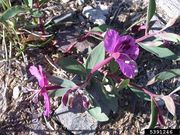 |
36 KB | dwarf fireweed Magnoliopsida > Myrtales > Onagraceae Chamerion latifolium (L.) Holub Image Number: 5391246 This work is licensed under a Creative Commons Attribution-Noncommercial 3.0 United States License. Photographer: Mary Ellen (Mel) Harte | 1 |
| 04:34, 24 May 2009 | Fireweed up close.jpg (file) | 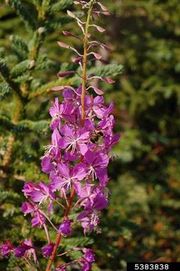 |
23 KB | fireweed Magnoliopsida > Myrtales > Onagraceae Chamerion angustifolium (L.) Holub Image Number: 5383838 Add to Light Box For Batch Downloading and Commercial Usage Requests PowerPoint - 768x512 Small Print - 1536x1024 This work is licensed | 1 |
| 04:26, 24 May 2009 | Fireweed distribution map.jpg (file) | 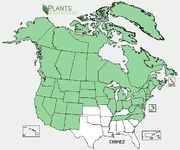 |
62 KB | The fireweed is present in the places that are green, but aren't present in the places that are white. | 1 |
| 04:16, 24 May 2009 | Fireweed open field.jpg (file) | 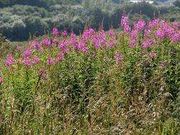 |
14 KB | Chamerion angustifolium subsp. angustifolium (L.) Holub Fireweed in Open Field Infraspecies recognized by T Orrell (custodian), The Integrated Taxonomic Information System | 1 |
| 04:04, 24 May 2009 | 28569 large.jpg (file) | 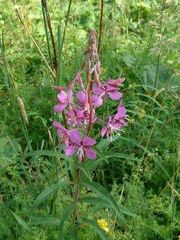 |
21 KB | Chamerion angustifolium subsp. angustifolium (L.) Holub Fireweed Close Up Infraspecies recognized by T Orrell (custodian), The Integrated Taxonomic Information System | 1 |
| 16:40, 18 May 2009 | Chamerion angustifolium subsp. angustifolium.jpg (file) | 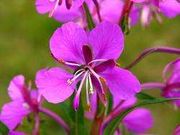 |
7 KB | Chamerion angustifolium subsp. angustifolium (L.) Holub Fireweed Infraspecies recognized by T Orrell (custodian), The Integrated Taxonomic Information System | 1 |
| 17:51, 16 May 2009 | Chsu11 002 lvp.jpg (file) | 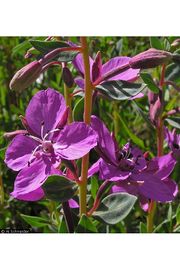 |
141 KB | Al Schneider @ USDA-NRCS PLANTS Database . Symbol: CHLA13 Group: Dicot Family: Onagraceae Duration: Perennial Growth Habit: Forb/herb Subshrub | 1 |
| 04:29, 23 April 2009 | Cladinarangiferina.jpg (file) | 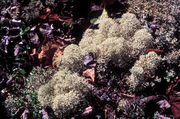 |
76 KB | Title Reindeer Moss or Caribou Moss Lichen Alternative Title Cladina (or Cladonia) rangiferina Creator U.S. Fish and Wildlife Service Subject Vegetation Tundra Lichen Wildlife refuges Innoko National Wildlife Refuge Publisher U.S. Fish and Wildlif | 1 |
| 04:23, 23 April 2009 | Getimage.jpg (file) | 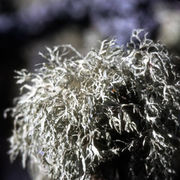 |
58 KB | Title Reindeer Moss or Caribou Moss Lichen Alternative Title Cladina (or Cladonia) rangiferina Creator Atwell, Gerry Subject Vegetation Tundra Lichen Publisher U.S. Fish and Wildlife Service Type Still image Format JPG Source AK/RO/03252 L | 1 |
| 04:20, 23 April 2009 | 4-7.jpg (file) | 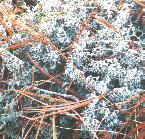 |
29 KB | Reindeer Lichen mixed in with white pine needles. The Lichen is the grayish-white bush. It is laying on the forest floor in a plot that was studied. | 1 |
| 04:06, 23 April 2009 | Clsu7 001 shp.jpg (file) | 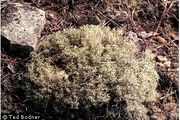 |
51 KB | Cladina subtenuis (Abbayes) Hale & W.L. Culb. reindeer lichen | 2 |
| 03:56, 23 April 2009 | 4-10.jpg (file) | 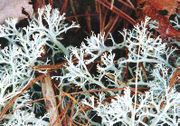 |
28 KB | lichen with needles, leaves, and sticks in background. The lichen is the grey-white plant that looks like antlers. | 1 |
| 04:33, 3 March 2009 | PersianGulf bloom.jpg (file) | 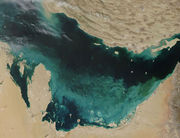 |
53 KB | Satellite image of the Persian Gulf shows a gulf-wide whiting extending from the coast of the United Arab Emirates. Qatar is in the peninsula at the bottom, with Saudi Arabia to the west. The mountainous country to the north is Iran. The northern extent o | 1 |
| 04:24, 3 March 2009 | Synechococcus.jpg (file) | 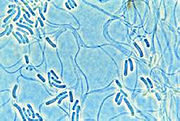 |
37 KB | Sausage-shaped cells are unicellular cyanobacteria (Synechococcus) and filaments are green nonsulfur bacteria resembling Chloroflexus and Roseiflexus. Credit: Richard W. Castenholz, University of Oregon | 2 |
| 04:15, 3 March 2009 | Soft coral eunicea 600.jpg (file) |  |
69 KB | Cyanobacteria are increasingly common on Caribbean coral reefs and are frequently found overgrowing benthic organisms such as this soft coral (Eunicea sp.). Although some cyanobacteria form symbiotic relationships with a host organism, others are detrimen | 1 |
| 04:09, 3 March 2009 | Filamentous cyanos 600.jpg (file) | 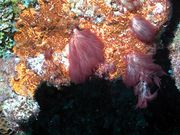 |
77 KB | In general, most microorganisms are too small to be seen with the naked eye. However, these tufts of filamentous cyanobacteria form large accumulations of individual microscopic cells that are visible. Cyanobacteria often form large aggregations that prod | 1 |
| 16:39, 2 December 2008 | 300px-Proteles cristatus1.jpg (file) | 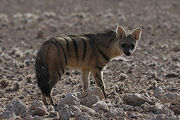 |
20 KB | Aardwolf | 1 |
| 16:32, 2 December 2008 | 200px-Parahyaena brunnea 3.jpg (file) | 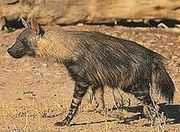 |
13 KB | Brown Hyena Parahyaena brunnea. | 1 |
| 16:30, 2 December 2008 | 250px-Striped Hyena.jpg (file) | 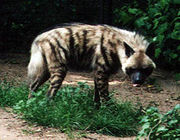 |
18 KB | Striped Hyena, Hyaena hyaena | 1 |
| 16:25, 2 December 2008 | Spottedhyena.jpg (file) | 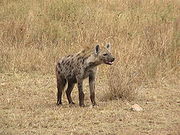 |
18 KB | Striped Hyena | 1 |
| 16:39, 20 November 2008 | Borophagus.jpg (file) | 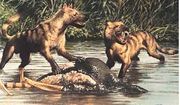 |
16 KB | Borophagus direptor. Hyenas eating dead animal in a river. | 1 |
| 16:31, 20 November 2008 | 48.jpg (file) | 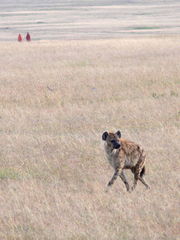 |
235 KB | Hyena with Masai warriors in the background | 1 |
| 16:28, 20 November 2008 | 42.jpg (file) | 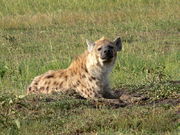 |
373 KB | Spotted hyena laying on the ground. | 1 |
| 16:21, 20 November 2008 | BrownHyena.gif (file) | 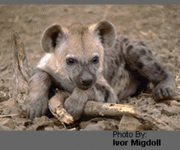 |
28 KB | Brown Hyena cub. | 1 |
| 18:28, 11 November 2008 | Hyena h.jpg (file) | 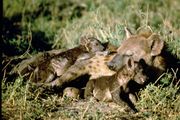 |
116 KB | A sleepy female spotted hyena lounges with her seven-week old cubs in the Masai Mara National Reserve, Kenya. Credit: Kay E. Holekamp | 1 |
| 01:11, 25 October 2008 | M-168.jpg (file) | 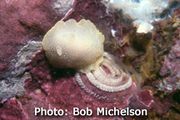 |
63 KB | White Atlantic Cadlina (Cadlina laevis) - This nudibranch (shell-less snail), is broadly oval in shape. Size 1" in length and 3/8" wide. Color semi-transparent to whitish with yellow spots. Relatively easy specie to identify due to its' size and color. Fo | 1 |
| 01:04, 25 October 2008 | M-169.jpg (file) | 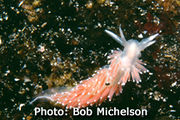 |
75 KB | Rim-Backed Nudibranch (Polycena dubia) - On each side of the body are lateral ridges with projecting appendages. The back has small and numerous appendages with a circle of gills in the middle. Color body - transparent to whitish, tips of appendages - yel | 1 |
| 14:51, 23 October 2008 | Bodypic giantred lg.jpg (file) | 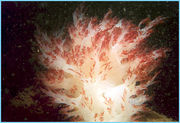 |
48 KB | Giant Red Dendronotid Nudibranch (Dendronotus rufus) Protective coloration helps it blend in with the rocky shoreline. | 1 |
| 16:22, 22 October 2008 | Bodypic orangepeel lg.jpg (file) | 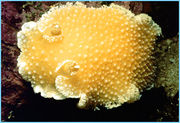 |
49 KB | Largest nudibranch in the world, with adults reaching 12 inches (300 mm). Also found in Russia where it is called tocni and eaten raw or cooked. | 1 |
| 16:27, 21 October 2008 | Aeolid nudibranch 186.jpg (file) | 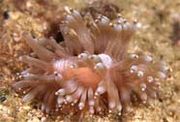 |
6 KB | Aeolid nudibranchs lack gills and utilize their dorsal cerata for respiration and defense. (Photo: Dr Bill Rudman) | 1 |
| 01:36, 21 October 2008 | Nudibranchs 600.jpg (file) | 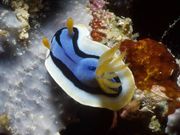 |
37 KB | Soft-bodied nudibranchs use toxic chemicals to protect them from predators. This nudibranch obtains its distasteful compounds from its sponge diet. Image courtesy of Valerie Paul. | 1 |